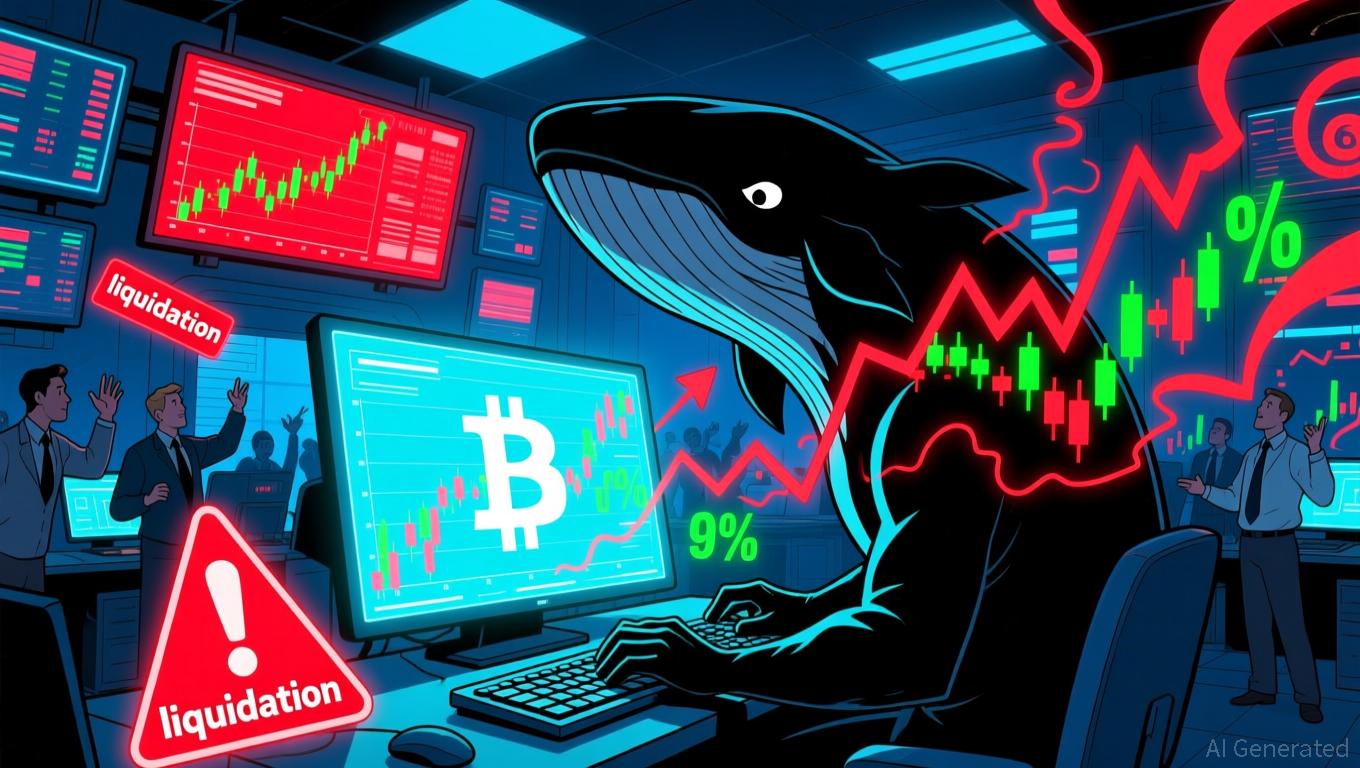Deciphering the Growth of Hyperliquid in Institutional Trading
- Hyperliquid, a decentralized derivatives platform, surged to $47B weekly trading volume in 2025 through fee cuts and EVM-compatible infrastructure upgrades. - Institutional adoption accelerated via Safepal integration, SEC S-1 filing, and $1B HYPE token buyback initiatives with Paradigm-affiliated partners. - USDH stablecoin (backed by BlackRock/Stripe) and 21Shares' SEC-approved ETF proposals highlight DeFi-TradFi convergence through institutional-grade security. - Despite regulatory risks and competiti
On-Chain Derivatives Innovation: A Catalyst for Growth
In 2025, Hyperliquid’s technological breakthroughs played a crucial role in boosting liquidity and expanding the market. The rollout of HIP-3 growth mode in November 2025
Alongside these fee cuts, Hyperliquid’s HyperEVM and Unit layers, launched in February 2025, strengthened its infrastructure by supporting
Institutional Adoption: Bridging DeFi and TradFi
Hyperliquid’s growth among institutional users has been propelled by targeted partnerships and regulatory progress. A prime example is its partnership with Safepal, a top crypto wallet provider,
The platform’s S-1 registration with the U.S. Securities and Exchange Commission (SEC) in 2025 marked a significant step toward integrating with traditional financial markets. By raising up to $1 billion through a public listing and merging with Sonnet BioTherapeutics and a SPAC,
Institutional trust is also reflected in the creation of Hyperliquid Strategies, a digital asset treasury (DAT) focused on acquiring HYPE tokens.
Case Studies: USDH and the HYPE Token Ecosystem
Hyperliquid’s USDH stablecoin, introduced in 2025, marks a pivotal advancement in its institutional integration.
The HYPE token has also drawn institutional attention through initiatives such as 21Shares’ proposed U.S. SEC-approved ETF,
Future Outlook and Challenges
Despite Hyperliquid’s rapid expansion through innovation and alliances,
In summary, Hyperliquid’s ascent in institutional trading is fueled by its on-chain derivatives breakthroughs, strategic collaborations, and proactive regulatory engagement. As the boundaries between DeFi and TradFi continue to
Disclaimer: The content of this article solely reflects the author's opinion and does not represent the platform in any capacity. This article is not intended to serve as a reference for making investment decisions.
You may also like
Bitcoin News Update: Major Whale Places $87 Million 3x Leveraged Bet Opposing BTC Surge Amid Divided Market
- A Hyperliquid whale opened a $87.58M 3x BTC short, contrasting with bullish market trends and other traders' strategies. - Another 20x $131M short faces liquidation risk if BTC surpasses $111,770, while $343.89M in 24-hour liquidations highlight short-position vulnerability. - Technical indicators (RSI 66, 15/1 buy/sell signals) and institutional BTC purchases support upward momentum despite liquidity risks on Hyperliquid. - Diverging whale strategies and macro factors like Fed policy underscore crypto's

Ethereum News Update: Major Institutions View Ethereum as a Key Asset, Outpacing ETF Investments
- 68 publicly traded firms now hold 12.7 million ETH, surpassing all Ethereum spot ETFs' 11.3 million holdings as of July 2024. - Firms like Coinbase and Gemini lead corporate accumulation, while banks like Fidelity expand crypto custody services for institutional clients. - Analysts cite regulatory clarity and improved risk frameworks as drivers, with 72% of institutional investors boosting crypto allocations in 2024. - Critics warn of market manipulation risks as corporate holdings now control 54% of ins
Breet's Enhancement Addresses Africa's Cryptocurrency Instability and Delayed Transactions
- Breet 3.0 Pro Max upgrades Africa's OTC crypto platform with USD wallets, instant transfers, and flat fees to combat volatility and slow settlements. - Key features include stable dollar holdings, peer-to-peer transfers bypassing banks , and automated issue resolution to reduce transaction friction. - Business tools now offer multi-currency templates, VIP tiers for high-volume traders, and security dashboards tracking account activity. - The update addresses Africa's crypto challenges by stabilizing purc

DeFi's Automation Shortfall Addressed: Orbs Introduces dSLTP to Achieve CeFi-Grade Risk Control
- Orbs launches dSLTP, a decentralized stop-loss/take-profit protocol for DEXs, bridging CeFi automation with DeFi. - The protocol automates risk management via on-chain orders, reducing real-time monitoring needs during volatility. - Built on Orbs' Layer-3 infrastructure, it enhances DEX functionality with CeFi-grade tools while maintaining decentralization. - This innovation addresses DeFi's automation gap, potentially driving DEX adoption and institutional-grade on-chain trading.
